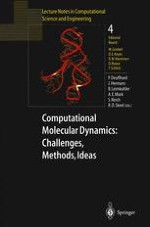On May 21-24, 1997 the Second International Symposium on Algorithms for Macromolecular Modelling was held at the Konrad Zuse Zentrum in Berlin. The event brought together computational scientists in fields like biochemistry, biophysics, physical chemistry, or statistical physics and numerical analysts as well as computer scientists working on the advancement of algorithms, for a total of over 120 participants from 19 countries. In the course of the symposium, the speakers agreed to produce a representative volume that combines survey articles and original papers (all refereed) to give an impression of the present state of the art of Molecular Dynamics.
The 29 articles of the book reflect the main topics of the Berlin meeting which were i) Conformational Dynamics, ii) Thermodynamic Modelling, iii) Advanced Time-Stepping Algorithms, iv) Quantum-Classical Simulations and Fast Force Field and v) Fast Force Field Evaluation.
